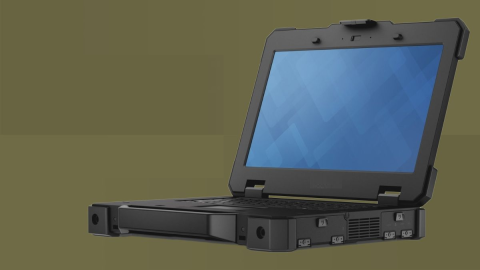Altium Designer 25: Pioneering Collaboration, Product Development, and Advanced Simulation

In the fast-evolving world of electronics, collaboration is key to efficient product development and innovation. Altium Designer 25 (AD25) emerges as a powerful platform designed to bridge traditional gaps, enabling seamless collaboration across teams and improving the efficiency of high-complexity PCB projects. This article explores how AD25’s new and enhanced capabilities—spanning PCB CoDesign, Product Design with Harness and Multi-board capabilities, Simulation, and MCAD CoDesigner — empower teams to create cohesive, high-performance electronic systems.
PCB CoDesign: Real-Time Collaborative Workflows
Altium Designer’s PCB CoDesign capability has been refined to streamline collaboration, allowing engineers and designers to work simultaneously with real-time design update notifications. This feature is crucial for projects where coordination between multiple people working on the same board at the same time. The enhanced CoDesign capabilities in AD25 foster a dynamic, collaborative workspace that reduces development time and minimizes errors through a unified design approach.

PCB CoDesign Compare and Merge Panel
Key benefits include:
- Seamless Team Collaboration: PCB CoDesign enables multiple engineers to work in parallel on a shared project through branching, avoiding overwrites and lost work. Team members can track the server copy in real-time, view status updates, and systematically merge changes—keeping everyone aligned and efficient.
- Efficient Conflict Resolution and Tracking: With intuitive conflict detection, PCB CoDesign allows designers to handle overlapping changes immediately, such as combining conflicting polygons into a single pour, choosing between local updates or server versions. It also categorizes modifications for easy comparison, allowing clear and swift understanding of each change.
- Visual Clarity and Accountability: PCB CoDesign’s custom color-coded system (default colors: green for additions, orange for modifications, and red for removals) provides instant visual insight into changes, enhancing transparency and accountability across the team. Every update is organized and tracked, fostering a clear and coordinated design process.
Complete Product Design: Integrating Multi-board and Harness Design
Modern electronic products often rely on multiple interconnected PCBs, making multi-board and harness design essential to streamline development and ensure cohesive functionality. Altium Designer’s advanced Multi-board Design and Harness Design tools create a seamless workflow by enabling teams to visualize complex assemblies, manage inter-board connectivity, and optimize cable and harness integration — providing a comprehensive solution within a single platform.

Multi-Board Design with Harness Integration
Advantages of Multi-board Design
- Modularity: Multi-board systems allow each PCB to be developed, tested, and refined independently. This modular approach makes upgrades and repairs manageable and reduces downtime.
- Optimized Performance: Each PCB can be tailored to specific functions, boosting overall system efficiency by eliminating redundancies.
- Improved Thermal Management: By isolating heat-generating components, multi-board designs help reduce overheating risks, ensuring reliable performance in the final product.
- Easier Maintenance and Upgrades: Faulty or outdated boards can be swapped out without overhauling the entire system, saving time and costs.
Harness Design Capabilities for Multi-board Systems
Harness design is critical in managing interconnections across PCBs, supporting high-speed signal transmission and mechanical integrity.

Harness Design with a Multi-board Project
Key benefits include:
- Integrated Harness Design: Create full wiring harnesses, from pin connections to manufacturing docs, all within the same environment as PCB and system design, eliminating the need for third-party software.
- Seamless Multi-board Coordination: Automatically synchronize harness wiring diagrams with multi-board projects. Changes made in the multi-board schematic are reflected in the harness wiring diagram, ensuring consistency across connectors, parent PCBs, and harnesses.
- Leverage Component Libraries: Use component libraries for cable assemblies connectors to ensure consistency, traceability, and seamless integration with ActiveBOM.
- Streamline Documentation with Draftsman: Create detailed harness drawings in Draftsman, including cable views and dimensions, and generate a BOM and manufacturing documentation for seamless team communication.
Together, these capabilities deliver significant advantages. Altium Designer’s unified workflow allows designers to manage all aspects of a system within a single environment, reducing the need for external tools and minimizing communication gaps. With built-in tools to detect and resolve mechanical and electrical issues, teams can accelerate development cycles and bring products to market faster. Additionally, optimized inter-board connections improve product reliability and performance, enhancing overall quality and ensuring robust, high-performing designs.
Simulation: Empowering Design Precision with Advanced Tools
Simulation is critical in the early stages of PCB design, allowing engineers to validate performance and address potential issues before physical prototyping. Altium Designer’s simulation tools have been upgraded in AD25 to deliver enhanced accuracy and functionality, particularly valuable for high-speed applications.

S-Parameter Analysis with Altium Designer
SPICE and Ansys CoDesigner Integration
Altium Designer’s SPICE-based MixSim and Ansys CoDesigner tools allow engineers to analyze and optimize circuit behavior in real time. These tools help ensure that the PCB design adheres to performance requirements from the start:
- SPICE-Based MixSim: Altium Designer’s SPICE-based MixedSim technology offers powerful mixed-signal simulation, ideal for high-speed designs where signal reflections and impedance mismatches can affect performance. With an enhanced SPICE core, MixedSim enables both analog and digital simulations, allowing designers to analyze key circuit characteristics like voltage and current distribution without risking physical components. Compatible with SPICE3f5, PSpice®, and LTspice® models, MixedSim supports complex, real-world scenarios. Directly integrated with Altium’s SimData editor, it provides a seamless environment for efficient verification and refinement, ensuring reliable performance in demanding applications.
- Ansys CoDesigner Integration: Altium Designer's integration with Ansys CoDesigner elevates the design process by enabling advanced power, thermal, and signal integrity simulations, crucial for high-speed, high-power applications. This integration allows engineers to virtually validate PCB designs, assess heat dissipation, power distribution, and signal integrity early in development, identifying and resolving issues before they reach manufacturing. The bi-directional communication between Altium Designer and Ansys Electronics Desktop (AEDT) through an Altium 365 Workspace enables seamless sharing of design changes and simulation data, minimizing manual data exchanges and shortening design cycles.

Ansys CoDesigner report with Altium Designer
With these simulations, engineers can optimize layouts for energy efficiency, thermal stability, and signal fidelity, refining designs upfront to prevent overdesign and minimize late-stage failures. The integration also enhances collaboration between PCB and simulation engineers, enabling adjustments to layer stackups, materials, and component layouts—all essential for maintaining signal integrity and consistent power delivery across the design. This streamlined approach ensures robust, reliable designs that meet the rigorous demands of advanced applications.
Power and Signal Analysis: Ensuring Stability in High-Speed Designs
The Power Analyzer and Signal Analyzer in AD25 offer deep insights into how designs will perform under various conditions. These tools are essential for identifying and mitigating power fluctuations and signal degradation risks, particularly as the demand for high-speed, high-performance devices grows:

“Show on PCB” feature with the SI Analyzer by Keysight

“Show on PCB” feature with the Power Analyzer by Keysight
- Power Analyzer: The Power Analyzer in Altium Designer optimizes the power distribution network (PDN) for high-speed, high-density designs. It simulates DC Power Integrity (PI-DC), ensuring stable power delivery across components without voltage drops or current density issues. By modeling copper structures like planes, traces, and vias, it calculates power delivery voltages and currents, helping to prevent hotspots and enhance power flow efficiency. Interactive heatmaps and probes reveal voltage and current density issues, allowing adjustments to track widths, copper thicknesses, and via properties. Detailed reports provide critical insights for creating a stable, reliable PDN, eliminating guesswork early in the design process.
- SI Analyzer: The SI Analyzer is an indispensable tool in high-speed PCB design, especially for addressing critical signal integrity issues such as crosstalk, electromagnetic interference (EMI), and layout-induced distortions. Equipped with advanced diagnostic and simulation capabilities, it enables teams to pinpoint and mitigate these interference factors, preserving the fidelity and reliability of high-speed signals. By facilitating real-time adjustments to layout, routing, and grounding strategies, the Signal Analyzer helps engineers maintain signal clarity, reduce data errors, and ensure compliance with performance standards. This integration is especially valuable in environments with complex electromagnetic coupling and grounding challenges, where maintaining low-impedance paths and optimal trace spacing is crucial for minimizing crosstalk and EMI.
MCAD CoDesigner: Seamless Integration Between PCB and Mechanical Design
In today’s fast-paced product development environment, seamless collaboration between electrical and mechanical design teams is critical. Altium Designer’s MCAD CoDesigner bridges the ECAD-MCAD divide, empowering teams to work together more effectively on integrated product designs, from compact consumer devices to complex industrial equipment.

Design pulled from Altium Designer to SolidWorks with MCAD CoDesigner
Key features include:
- Unified 3D Visualization and Interactive Design: Altium Designer's 3D visualization and routing tools provide a direct link between ECAD and MCAD design environments, allowing both teams to explore PCB layouts in real time. With Altium MCAD CoDesigner, electronic and mechanical engineers can align component placement, verify fit within enclosures, and ensure precise integration between electronic and mechanical elements—critical for creating compact, space-efficient products. This seamless communication eliminates the need for error-prone file conversions, allowing teams to iterate collaboratively and achieve high-quality, integrated designs more efficiently.
- Synchronize Harness Designs Between ECAD and MCAD: Altium MCAD CoDesigner enables seamless synchronization of harness designs, transferring connectivity, splices, and Harness topology from ECAD to MCAD, while also sending back physical wire lengths and 3D models from MCAD to ECAD. This integration ensures that harnesses, along with multi-board assemblies and enclosures, are accurately aligned across both environments, enhancing collaboration and reducing errors.
Seamless ECAD-MCAD Integration for Unified Development
With separate design tools often leading to coordination challenges, Altium MCAD CoDesigner brings together ECAD and MCAD workflows, ensuring smooth, synchronized changes between domains. By eliminating cumbersome file conversions, design updates flow directly between the electrical and mechanical teams, keeping everyone aligned and reducing errors. This integration enables teams to develop products that are cohesive, reliable, and ready for manufacturing.
Improved Collaboration on Rigid-Flex and Multi-Board Designs
Rigid-flex PCB designs, known for their complex, foldable structures, demand close collaboration between ECAD and MCAD teams. Altium’s MCAD CoDesigner enables this, synchronizing rigid-flex designs to ensure that every fold and fit is accurate. Multi-board assemblies also benefit from MCAD CoDesigner’s capabilities, allowing individual PCBs and enclosures to be precisely positioned within product housing.

Rigid Flex Design in Altium Designer
Conclusion
Altium Designer 25's focus on collaboration is transforming the PCB design landscape, providing tools that not only streamline workflows but also enhance design accuracy and reduce time to market. With PCB CoDesign, Product Design capabilities for Harness and Multi-board, advanced Simulation, and MCAD integration, Altium Designer empowers teams to handle the increasing demands of modern electronics with ease and efficiency. Through these tools, Altium Designer fosters a collaborative, integrated design environment, ensuring that engineers can focus on innovation without being hindered by technical limitations.
To explore these features and the upgrades in Altium Designer 25, join us for an exclusive webinar on November 21, 2024.
This session will dive into the new functionalities, provide insights into optimizing workflows, and answer your questions about how AD25 can elevate your design process. Don’t miss this chance to connect with experts and get a firsthand look at the tools driving the future of PCB design.








